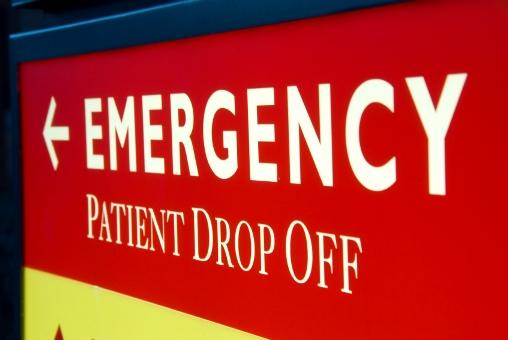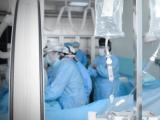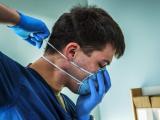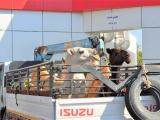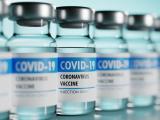One more infection pushed South Korea's MERS-CoV total to the 180 case mark today, as the country took new steps to limit the spread at hospitals and researchers shared more epidemiologic insights, especially on incubation period and the role of superspreading.
The country reported two more deaths, including in a caregiver who visited several health facilities, lifting the outbreak's fatality count to 29. And three studies today highlight transmission patterns, including "superspreading" events.
Tracking caregiver's contacts
The latest MERS-CoV (Middle East respiratory syndrome coronavirus) illness was detected in a patient in a hospital in Busan who had shared a room with an earlier confirmed patient, the Korea Herald reported today.
The two patients who died from their infections were a 65-year-old man and a 70-year-old woman who worked as a caregiver and was exposed to a MERS patient at Kyung Hee University Hospital in Seoul, which she visited while caring for a man who was her client, the Korea Times reported today.
According to the report, she wasn't on the contact list, because the man she took care of didn't tell health officials she went with him to the hospital. The woman's MERS-CoV infection wasn't detected until 12 days after her symptoms started, and she died 2 days after her illness was confirmed.
In the 8-day interval between her symptom onset and the start of monitoring, she visited four hospitals, an Asian medicine clinic, and four pharmacies, according to the Times.
South Korea's health ministry added six more facilities to its list of health sites affected by MERS-CoV, most of them apparently linked to possible exposure from the woman, according to a list posted by Hong Kong's Centre for Health Protection (CHP). In the statement, the CHP asked members of the public who visited the locations on certain dates to contact its personnel on a telephone hotline.
The number of contacts on South Korea's monitoring list dropped by 461 today to 2,642, according to an update on the World Health Organization's (WHO's) Western Pacific regional office Web site.
Hospitals tighten visitor monitoring
Because of a large number of MERS-CoV exposures to patients and visitors in hospital emergency departments (EDs), which has made it difficult to identify and track all contacts, South Korea's health ministry is asking hospitals to track all ED visitors, Reuters reported today.
Facilities will be required to log the names and visit times of all patients, family members, and ambulance drivers, according to the report.
Kwon Deok-cheol, the ministry's head of healthcare policy, said at a briefing today, "This issue has been raised as one of the biggest problems, as we looked at the trend of the MERS outbreak."
The ministry said it would change the practice of people crowding ED waiting rooms waiting for hospital beds to open, and Kwon said officials are looking into a more permanent approach to help discourage the practice.
Reports probe outbreak epidemiology
A trio of reports in today’s issue of Eurosurveillance shed new light on some of the epidemiologic features of South Korea's outbreak and on the larger issue of MERS-CoV transmission, including possibly more lengthy incubation period in some patients and the role of virus superspreading.
The first report by researchers from South Korea's Gyeonggi province examined MERS-CoV transmission at the hospital where the index patient was treated between May 15 and May 17. Thirty-seven infections were linked to the man's stay at Pyeongtaek St. Mary's Hospital: 1 primary, 25 secondary, and 11 tertiary.
Several factors led to the high number of cases at the hospital, including a delay in identifying the index patient's MERS-CoV infection, relatives and healthcare workers sleeping in the same rooms with patients, inadequate air conditioning, and moving patients to other rooms and wards.
Median incubation period was 6 days, and the time between symptom onset and lab confirmation averaged 6.5 days. Among tertiary patients, however, the incubation period was 2 days longer and the interval between symptoms and disease confirmation was shorter compared with secondary patients.
The authors wrote that the shorter interval between symptoms and MERS-CoV confirmation might relate to quicker disease detection and earlier testing, but they added that the longer incubation in tertiary case-patients requires more investigation.
In the big-picture epidemiologic analysis, researchers from the WHO and Hong Kong said their findings suggest that South Korea's hospital outbreak pattern resembles outbreaks in the Middle East and is very similar to what officials observed during the SARS (severe acute respiratory syndrome) outbreak in 2002 and 2003.
So far four generations of infection have occurred in South Korea, and they said the event is "remarkable," because 89% of the infections appear to be linked to three hospital-linked superspreading events. Aside from those events, MERS-CoV has had low transmissibility in the country, they added.
The team calculated the illness incubation period in the outbreak to be as long as 12.1 days, which they said supports the 2-week quarantine period.
Though they acknowledged that it is hard to assess case fatality rate (CFR) early in the outbreak when the outcome isn't known for all patients, the preliminary estimate of 21% is much lower than reported in the Middle East, but similar to secondary cases that have been reported so far and similar to that for SARS in Hong Kong in 2003.
If the CFR turns out to be lower at the end of the outbreak, it could be related to earlier care, a lower infective dose, or host factors that affect illness severity, the group wrote. They emphasized that the superspreading parallels with the SARS outbreak show how important it is to understand the dynamics of the events and to find steps to prevent similar events in the future.
Impact of 'superspreading'
Meanwhile, researchers from Britain and Switzerland who looked at MERS clusters so far and the impact of superspreading found that clusters the size of South Korea's aren't unexpected for the virus, because transmission appears to be highly overdispersed.
They wrote that overdispersion, seen in other diseases such as SARS and Ebola, can stem from several factors, such as individuals' levels of virus shedding, contact rates, hospital procedures and location, population structure, and population density.
Though it's difficult to untangle all the factors, they said that getting a handle on the extent of overdispersion can help with interpreting surveillance findings and making more realistic disease transmission and control analyses.
See also:
Jun 25 Korea Herald story
Jun 25 Korea Times story
Jun 25 CHP statement
Jun 25 WHO regional office MERS-CoV update
Jun 25 Reuters story
Jun 25 Eurosurveillance report on a hospital outbreak
Jun 25 Eurosurveillance report on outbreak epidemiology
Jun 25 Eurosurveillance report on MERS superspreading
